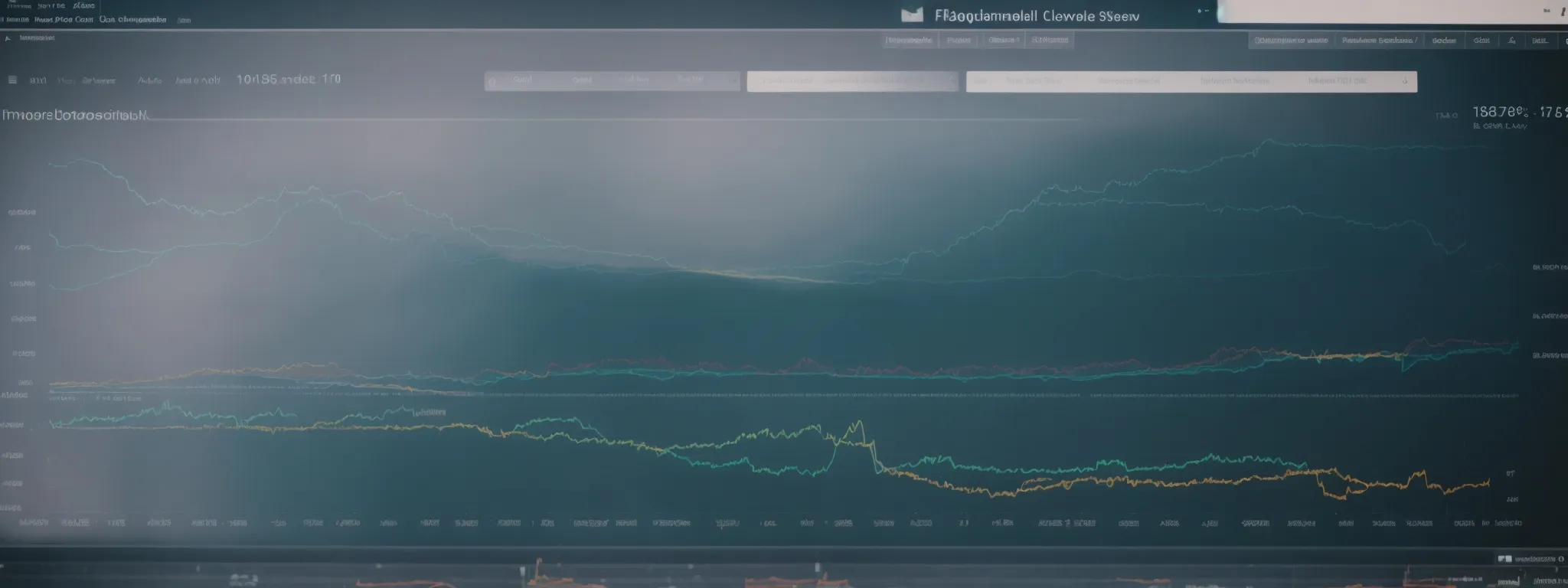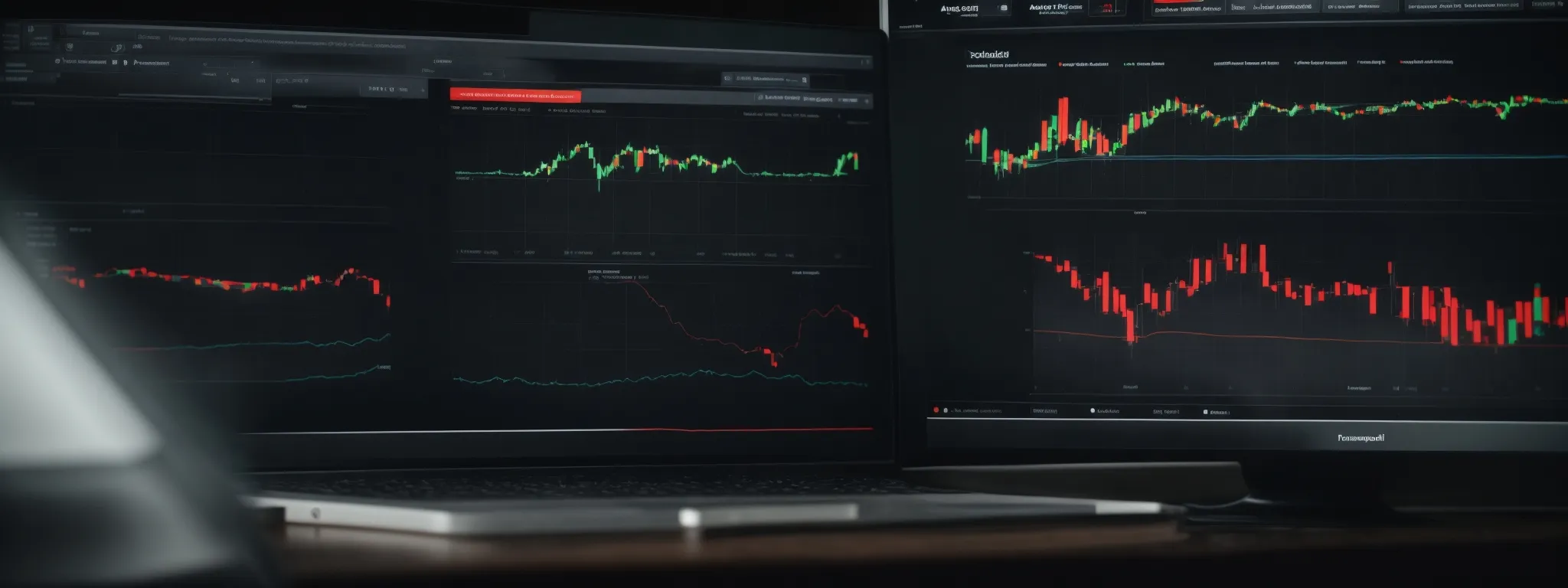SEO Split Test: Optimizing Strategies
Mastering SEO Split Test: Strategies for Effective Optimization The digital landscape is ever-evolving, with search engines regularly refining their algorithms to deliver the most relevant search results. […]
Mastering SEO Split Test: Strategies for Effective Optimization
The digital landscape is ever-evolving, with search engines regularly refining their algorithms to deliver the most relevant search results.
Within this dynamic environment, SEO split testing has emerged as a pivotal technique for marketers to optimize their websites and enhance search engine visibility.
By dissecting the elements that contribute to search ranking and meticulously testing variations, businesses can discern the strategies that yield the most potent SEO gains.
With a focus on LinkGraph’s bespoke split testing services, companies gain insights backed by the profound expertise of a seasoned SEO team.
Keep reading to uncover the intricate tapestry of tools and tactics that can elevate a brand’s digital presence through informed SEO experimentation.
Key Takeaways
- SEO Split Testing Is an Essential Method for Refining Digital Marketing Strategies and Improving Search Engine Rankings
- Careful Planning, Targeted Hypothesis Creation, and Rigorous Testing Protocols Are Core to Successful SEO Experiments
- Continuous Analysis and Adaptation Based on Test Results Are Crucial for Evolving and Enhancing SEO Strategies
- Collaboration and Knowledge Sharing Across Teams Enhance the Overall Effectiveness of SEO Split Tests
- Staying Attuned to Market Trends and Search Engine Algorithm Updates Is Vital for Maintaining the Relevance of SEO Practices
Understanding SEO Split Testing Fundamentals

At the forefront of SEO innovation lies the practice of SEO split testing, a method that allows Meticulous Scrutiny of Search Engine Performances by contrasting varied approaches in a controlled environment.
This potent technique unpacks the intricate processes governing search engine ranking and engagement—enabling digital marketers to Tailor Strategies With Precision.
By defining SEO split testing in clear terms, practitioners gain access to a vital experiential instrument, orchestrating experiments that distill data-driven insights.
As one delves into the core components of SEO split tests, an expansive realm opens up where empirical evidence guides the refinement of SEO endeavors, ensuring each move on the digital chessboard is both tactical and informed.
Defining SEO Split Testing in Simple Terms
SEO split testing, often known as A/B testing in the realm of search engine optimization, operates on the principle of comparing two webpage variants to assess which one performs better in search rankings.
This method involves exposing a variant group, or the test subject, to an algorithmic change while maintaining a control group unaffected, thus isolating the impact of the SEO adjustments applied.
Recognizing the Importance of SEO Experiments
SEO experiments stand as a cornerstone of modern search engine strategies, empowering organizations to validate hypotheses with empirical evidence. By engaging in a Meticulous Examination of SEO Variables, businesses can identify the most impactful elements, leading to optimized user experience and superior search rankings.
In an industry susceptible to frequent algorithm updates, the implementation of SEO experiments ensures agility and adaptability. These trials facilitate a deep understanding of how search engines interpret web page changes, allowing digital marketers to respond proactively to the ever-evolving digital landscape.
Exploring the Core Components of SEO Split Tests
At the heart of SEO split testing lies the alignment of two website variations, designed to uncover the most effective elements that lead to improved organic search visibility. One variant constitutes the “test group”—a page subject to specific SEO changes—while its counterpart, the “control page,” remains untouched, serving as a benchmark for performance comparison.
These strategic trials engage site elements such as title tags, meta descriptions, and content structure in a rigorously measured set-up, gauging user responses and search engine crawlers’ reactions. The outcomes of these split tests offer conclusive evidence on user behavior trends and SERP positioning, steering future SEO endeavors towards proven success.
Crafting a Robust SEO Split Testing Strategy

In the domain of digital marketing, mastering the technique of SEO split testing is tantamount to wielding a double-edged sword, with the ability to carve distinct pathways towards optimization success.
Initiating such strategies demands a clarity of purpose—identifying key objectives and ensuring they resonate with overarching SEO goals.
Organizations willing to commit to this level of strategic planning set up a robust framework that encourages ongoing optimization and paves the way for continuously scaling search engine results.
Thus, a well-constructed SEO split testing plan becomes an indispensable tool in the arsenal of savvy digital marketers striving for excellence in search engine visibility.
Identifying Key Objectives for Split Testing
As one embarks on the journey of SEO split testing, the primary step in this nuanced process manifests in pinpointing precise objectives. Such goals ought to directly align with the overarching intent to boost search visibility, from elevating the click-through rate (CTR) to enhancing on-page engagement metrics.
Detailed objectives serve as navigational beacons that steer the experimental direction and establish benchmarks for gauging SEO performance enhancements. These objectives act as the fulcrum around which split testing pivots, ensuring that every test conducted contributes meaningfully to the overall optimization trajectory of a company’s digital assets.
Aligning SEO Goals With Split Testing Efforts
Harmony between SEO ambitions and split testing frameworks epitomizes the essence of effective digital marketing. Every test implemented must directly contribute to the larger narrative of bolstering search engine presence, be it through enhancing content relevance or refining user journeys.
Initiating a robust SEO strategy, SEO professionals employ split testing not only to confirm the effectiveness of on-page elements but also to affirm alignment with key performance indicators that portray SEO success:
- Increment in organic traffic acquisition.
- Amplified user engagement reflecting longer session durations.
- Accretion in the conversion rate of visitor to customer.
This strategic cohesion ensures that iterative SEO efforts are not just random episodes of trial and error but calculated moves sculpting the website’s pathway to peak performance in SERPs.
Setting Up a Framework for Ongoing Optimization
Establishing a framework for ongoing optimization involves the persistent fine-tuning of SEO split testing methodologies. This proactive approach enables marketing professionals to leverage findings and adapt strategies to maintain a competitive edge in search rankings, essential for the dynamic nature of search algorithm shifts.
Such a framework demands an agile mindset, where the iterative process of testing becomes an integral part of the SEO routine. Marketers and SEO practitioners with this structure can rigorously analyze outcomes, applying refinements to the optimization process that are informed by current data and industry trends.
Choosing the Right Elements to Test in SEO

Mastering the delicate art of SEO split testing entails a keen discernment in choosing the right elements to scrutinize.
Decisive in influencing a website’s SEO fortitude, these elements must be judiciously chosen to align with the company’s strategic objectives.
In the quest to catapult search engine rankings, each variable selected for testing acts as a cog in the grand machine of optimization.
The selection should aim for high-impact areas that promise meaningful uplift in search engine results, always tethering the process to the primary aim of enhancing audience engagement and conversion.
The subsequent focus entails a balance between ongoing relevancy and a pointed concentration on the nuances that ultimately sway a website’s SEO performance.
Selecting Impactful Variables for Split Testing
The selection of variables for an effective SEO split test requires acute discernment and strategic foresight. Marketing professionals vet potential test elements based on their proven impact on user engagement and search engine rankings, focusing on variables such as headline efficacy, image optimization, and site architecture refinements.
When curating variables for SEO split testing, discerning marketers prioritize elements that promise a substantial influence on search performance. It is the astute comparison of meta-descriptions, the analysis of internal linking structures, or the optimization of mobile responsiveness that often yields the most illuminating insights into SEO effectiveness.
Prioritizing Test Elements Based on Your SEO Strategy
When formulating an SEO strategy, the key lies in selecting test elements that align with the specific objectives of one’s digital marketing campaign. To facilitate an effective optimization process, LinkGraph’s SEO services advocate for focusing on core site components—like the user’s navigational experience and keyword optimization—that have a direct correlation with search visibility and user engagement.
Through the utilization of the SearchAtlas SEO tool, professionals at LinkGraph deftly prioritize elements that have a pronounced impact on ranking and relevance. These elements are methodically chosen to reflect the unique goals of the campaign, ensuring that the SEO split tests drive actionable results and contribute substantively to enhancing a website’s presence in search engine results pages.
Maintaining Relevancy and Focus During Tests
Maintaining relevancy during SEO split tests involves ensuring that each element under examination directly pertains to current market trends and user preferences. This focus ensures that the results are actionable and reflective of the digital environment’s actual conditions.
Attention to focus entails that every SEO split test remains intricately aligned with the predefined objectives of the overall optimization strategy. Disciplined adherence to this objective-centered approach guarantees that decisions stem from solid, relevant data:
| SEO Split Test Element | Relevance to Current Trends | Alignment with Optimization Objectives |
|---|---|---|
| Meta Descriptions | Highly Relevant | Directly Correlates with CTR Improvements |
| Headline Effectiveness | Crucial for User Engagement | Increases Page Views and Dwell Time |
| Internal Linking Structure | Essential for SEO | Facilitates Enhanced Site Navigation |
Designing Effective SEO Split Tests

Effective SEO split testing transcends mere trial and error; it embodies the sculpting of a strategic experiment that resonates with the core objectives of enhancing a website’s search engine visibility.
The inception of a proficient split test hinges on formulating robust hypotheses that target specific SEO phenomena, thereby establishing a foundation for precise and insightful experimentation.
These foundational elements—formulating targeted hypotheses, structuring tests for maximum insight, and creating accurate control and variation groups—coalesce to form the bedrock of an SEO test environment.
This environment, when meticulously designed, elucidates the subtlest nuances in search engine ranking dynamics, guiding marketers in deploying strategies that are grounded in quantifiable evidence and steering the trajectory of online success.
Formulating Hypotheses for Targeted Experiments
Formulating a hypothesis in the realm of SEO split testing is the keystone that supports targeted experimental design. It requires a clear projection of anticipated outcomes based on a thorough understanding of SEO principles and user behavior.
The hypothesis acts as a guiding star for the entire experiment; a well-defined and articulated hypothesis ensures that the test remains focused on obtaining relevant results that can significantly drive SEO strategy decisions:
- Initiate with a question that pinpoints a specific SEO concern or opportunity.
- Construct a predictive statement that reflects the expected influence on search engine results and user interaction.
- Align the hypothesis with measurable SEO reporting metrics for accurate evaluation post-experiment.
Each hypothesis is crafted not as a mere guess but as a strategic assumption grounded in data and historical SEO performance metrics. Through this data-informed projection, marketing teams can systematically assess the veracity of their SEO tactics and make informed adjustments for ongoing optimization.
Structuring Split Tests for Maximum Insight
Structuring SEO split tests for maximum insight demands a deliberate approach, focusing on data quality and relevance to the marketing goals at hand. Precision in set-up and execution ensures that findings are robust, providing a springboard for informed decision-making. A focus on the variables that have a documented influence on SERP performance underpins a strategy designed to elicit actionable insights.
To guarantee that SEO split tests yield conclusive results, digital marketing professionals Meticulously Design Experiments that measure the variance in key performance indicators (KPIs). They establish clear protocols for data collection and analysis, thus laying the groundwork for a transparent evaluation of strategies and their outcomes:
| SEO Element Tested | Data Quality Focus | Impact on SEO KPIs |
|---|---|---|
| Page Content Optimizations | Unique Visitor Interactions | Organic Traffic and Dwell Time |
| Navigation Structure Improvements | User Pathway Clarity | Bounce Rate and Conversion Pathway Efficiency |
| CTA Placement Alterations | Click-Through Rates | User Engagement and Goal Completion Rates |
Creating Control and Variation Groups for Accurate Comparison
Successful SEO split testing hinges on the establishment of well-defined control and variation groups, serving as the benchmark and the variable in the experimental equation. Control groups maintain the original element settings, becoming a baseline against which to measure the impact of changes applied to the variant pages.
Variation groups, conversely, incorporate the targeted SEO modifications, whether they involve tweaking meta-data, adjusting content layouts, or modifying navigational links. It is this systematic contrast that illuminates the efficacy of each SEO change, shaping the strategy with clarity born out of empirical comparison.
Analyzing SEO Split Test Results

Upon the meticulous execution of SEO split tests, the subsequent phase of analysis emerges as a cornerstone of the optimization process.
Professionals engaged in search engine optimization must adeptly interpret the intricate tapestry of data that unfolds from these tests to distill actionable insights.
This analytical journey entails a scrupulous examination of test outcomes, leveraging cutting-edge analytics tools that offer in-depth perspectives and culminates in informed, data-driven decisions.
These successive steps enable marketers to refine their SEO strategies effectively, ensuring that each iteration hones the precision of their digital marketing efforts.
Interpreting Data to Understand Test Outcomes
Interpreting data from SEO split tests requires a critical eye—one that can peer through the veil of numbers and charts to discern the true impact of SEO modifications on a website’s performance. Digital marketing professionals analyze fluctuations in search ranking and user engagement metrics to ascertain the effectiveness of the tested elements.
Data from these experiments offers a narrative that informs the SEO strategies at LinkGraph. SEO specialists scrutinize the results, paying close attention to shifts in key metrics such as click-through rates and time on page, to determine the actionable steps that will further optimize a website’s search engine presence.
Utilizing Analytics Tools for in-Depth Analysis
Utilizing analytics tools for in-depth analysis is crucial in unraveling the complexities of SEO split test results. LinkGraph’s seasoned experts harness advanced analytics platforms to interpret vast quantities of data, extracting meaningful patterns and trends that drive strategic SEO decisions.
The potency of these tools lies in their ability to dissect every facet of the SEO experiment, providing a multilayered view of performance analytics. Through meticulous scrutiny, the influence of individual SEO changes on a website’s search engine ranking and user experience crystallizes into actionable insight.
- Analytics tools ascertain the impact of SEO changes on organic search traffic.
- The tools measure user behavior shifts, including bounce rates and conversion paths.
- They facilitate a comparative analysis between control and variant group performance.
Making Data-Driven Decisions From Test Findings
The conclusive phase of SEO split testing is not simply a review of metrics but an opportunity to embark on informed strategy adjustments. Data-driven decisions require an interpretation of test findings that links clear outcomes to strategic objectives: Which changes lead to positive results, and which require re-evaluation for better search engine positioning and user experience?
Decisions that emerge from this deep dive into split test data are engineered to fortify a website’s SEO performance in a measurable way. Emphasis is placed on the implementation of successful test elements across relevant pages, ensuring cohesive and comprehensive site optimization.
| SEO Element | Control Group Data | Variant Group Data | Strategic Decision |
|---|---|---|---|
| Title Tags | Stable Rankings | Improved Rankings | Adopt New Title Tags |
| Content Quality | Lower Engagement | Higher Engagement | Enhance Content Across Site |
| Call-to-Actions (CTAs) | Unchanged Conversion Rates | Increase in Conversion Rates | Update CTAs for Greater Impact |
Implementing Learnings From SEO Split Testing

The initiation of SEO split testing culminates not at the moment of data collection but in the crucial phase where insights are translated into tangible enhancements.
Organizations equipped with comprehensive analyses must now navigate the path from intellectual comprehension to practical application.
Refining SEO tactics based on concrete test results emerges as a strategic imperative, enabling businesses to embrace continuous improvement through iterative testing.
What follows is an exploration of the methodologies professionals must adopt to ensure that the wisdom gleaned from split tests informs the evolution of their SEO campaigns, fostering an environment of perpetual optimization.
Translating Test Insights Into Actionable Steps
Translating the insights gleaned from SEO split tests into actionable steps necessitates a systematic approach tailored to specific optimization goals. Professionals at LinkGraph leverage the detailed analysis provided by such tests, carving precise pathways to enhance website performance that are bolstered by empirical evidence.
Ensuring that each modification reflects the users’ needs and search engine preferences, marketing teams Meticulously Apply Test Findings to refine on-page factors, from meta descriptions to content quality. This methodical application of test learnings directly contributes to the elevation of a website’s SERP position and user engagement levels.
Refining SEO Tactics Based on Test Results
Refining SEO tactics following the results of split testing involves a commitment to evolution, where the insights garnered become the bedrock for strategic innovation. The team at LinkGraph meticulously analyzes variant group data, integrating successful elements into the SEO framework to enhance search performance and user satisfaction.
With a nuanced understanding of SEO reporting metrics, LinkGraph’s professionals translate split test outcomes into precise SEO maneuvers. This strategic application of data ensures that subsequent optimizations are not based on conjecture but are the result of evaluated tests that have been proven to augment online visibility and business growth.
Continuous Improvement Through Iterative Testing
In the landscape of digital marketing, the concept of continuous improvement through iterative testing is a beacon guiding businesses towards their objectives. The ability to adapt, refine, and update strategies in the wake of SEO split test results fosters a mindset of perpetual progression, essential for maintaining relevance in the fast-paced world of search engine optimization.
Iterative testing goes beyond a single cycle of experimentation, Embracing a Philosophy of Sustained Growth and learning. With each test, the company accrues valuable insights, refining SEO tactics in a methodical fashion that incrementally enhances search performance: From on-page optimizations to link building methodologies, every SEO element is continually polished for peak efficacy.
- Derive actionable insights from completed SEO split tests.
- Implement changes based on data to improve search performance.
- Monitor results and prepare for the next testing cycle.
- Apply iterative learnings, solidifying long-term SEO strategies.
Best Practices for Continuous SEO Split Testing

As professionals navigate the nuanced terrain of search engine optimization, continuous SEO split testing stands as an invaluable practice, nurturing an ecosystem where perpetual enhancement is not just an ideal but a tangible reality.
This ongoing testing cycle is pivotal for organizations aiming to cement their presence atop search results while adapting to algorithmic shifts.
Establishing a rigorous test schedule, adhering to ethical testing standards to eschew penalties, and cultivating a culture of transparency, where knowledge and results are disseminated across various team spectrums, are all facets that contribute to the tapestry of robust SEO strategies.
In the endeavor for optimization supremacy, these best practices offer a roadmap guiding digital marketers toward the zenith of SEO mastery.
Establishing a Test Schedule for Regular Optimization
To cultivate a robust SEO framework, instituting a test schedule is imperative for consistent website optimization. This predetermined calendar ensures that SEO split testing becomes an integrated component of the ongoing marketing strategy, rather than an ad hoc activity.
Regular testing phases are strategically placed to align with both the cyclical nature of business operations and potential algorithm updates from search engines:
- Monthly assessments allow for reactive changes to consumer behaviors and market conditions.
- Quarterly reviews provide data on the sustained impact of larger SEO adjustments.
- Biannual deep dives ensure comprehensive evaluations, taking into account industry trends and the full scope of algorithmic changes.
Ensuring Ethical Testing Methods and Avoiding Penalties
Adhering to ethical testing practices in SEO split testing is paramount to avoid punitive actions such as penalties or deindexing by search engines. LinkGraph’s SEO specialists champion transparency and integrity by ensuring that each split test is compliant with the guidelines set forth by search engines, preserving the credibility and reputability of their clients’ websites.
Maintaining a clear boundary between ethical split testing and manipulative tactics is a non-negotiable standard within LinkGraph’s SEO services. Their approach is meticulously designed to substantiate the authenticity of optimization strategies without resorting to dubious practices like cloaking or presenting misleading content to search engine bots and users alike.
Sharing Knowledge and Results Across Teams
At the core of LinkGraph’s strategy is the principle of collaborative growth: sharing insights across team boundaries ensures that knowledge gleaned from SEO split testing fosters collective expertise. By distributing findings from SEO experiments, every department, from content creation to technical SEO, aligns their efforts towards a unified vision of search optimization mastery.
Facilitating an environment of shared learning equates to evolving a more empowered and informed marketing force, capable of implementing nuanced strategies that are reflective of cohesive team insight. With each experiment’s results being transparently communicated, LinkGraph cultivates a culture where adjustments and enhancements are made with both consensus and confidence:
| Department | Insight Shared | SEO Impact |
|---|---|---|
| Content Team | Keyword optimization results | Enhanced content relevance and reader engagement |
| Technical SEO Team | Site structure improvements | Increased crawl efficiency and indexation |
| User Experience (UX) Team | CTA placement data | Higher conversion rates through optimized user journeys |
Overcoming Challenges in SEO Split Testing

SEO split testing is a crucial tactic for discerning the factors that influence search engine rankings and user engagement.
Yet, professionals in the field confront a myriad of challenges that can skew results and complicate interpretations.
Overcoming these obstacles is paramount for maintaining the integrity of testing efforts and ensuring the long-term effectiveness of optimization strategies.
Addressing common SEO split testing pitfalls, contending with the volatility of external factors and algorithm updates, as well as staying attuned to market trends and shifts in user behavior, are essential competencies for SEO practitioners striving to master the art of split testing as a means to refine and bolster their optimization endeavors.
Addressing Common SEO Split Testing Pitfalls
LinkGraph’s SEO services recognize that one of the fundamental challenges in SEO split testing is distinguishing genuine performance changes from noise created by external factors. To mitigate such pitfalls, specialists meticulously segment test groups and apply rigorous statistical analysis, isolating variables to ensure data integrity and the reliability of conclusions drawn from the tests.
Another critical challenge lies in ensuring that test duration and sample size are sufficiently robust to capture meaningful data. SEO professionals must balance the timing of split tests with the natural fluctuations of search engine algorithms and user behaviors, conducting tests over a period that accommodates these variables without compromising the agility of a company’s SEO response.
Handling External Factors and Algorithm Changes
In the ever-changing landscape of digital marketing, SEO split testing must account for the dynamic nature of search engine algorithms. SEO professionals must continuously monitor search industry announcements and adjust their testing protocols in real-time to accommodate new algorithm changes, ensuring that data remains relevant and strategies effective.
External factors such as seasonal trends and competitor actions also play a significant role in SEO outcomes. The expertise of LinkGraph’s team allows practitioners to discern these variables’ influences, adapting their approaches to maintain the validity of split test results while navigating the complexities inherent in a fluctuating digital ecosystem.
Adapting to Market Trends and User Behavior Shifts
Staying ahead in the SEO arena demands sensitivity to the ebb and flow of market trends and shifts in consumer behavior. LinkGraph’s experts integrate real-time data and emerging patterns into their SEO split tests, ensuring that strategies are tailored to the prevailing winds of market demand and user expectations.
To remain agile and forward-thinking, LinkGraph’s team focuses on the insights gleaned from user interactions and shifts in the digital landscape: These observations serve as signposts, directing the recalibration of SEO split tests to maintain alignment with contemporary needs and preferences.
| Trend/Behavior | SEO Split Test Variable | Adaptation Strategy |
|---|---|---|
| Rise in Mobile Search Usage | Mobile Responsiveness | Optimizing for mobile-first indexing and user experience |
| Shift Towards Long-Form Content | Content Structure and Length | Testing comprehensive content to enhance engagement and dwell time |
| Increasing Importance of Local Search | Local SEO Elements | Refining local keywords and regional metadata for geographical relevancy |
Conclusion
Mastering SEO split testing is essential for developing effective optimization strategies in the ever-evolving landscape of digital marketing.
By employing controlled experiments that compare different webpage variants, marketers gain valuable insights into the specific elements that enhance search engine rankings and user engagement.
A systematic approach to testing, backed by a rigorous understanding of SEO principles and user behavior, allows for the refinement of on-page factors, shaping strategies that are grounded in data-driven decisions.
Regular, ethical testing informed by clear objectives ensures that businesses can adapt to algorithmic changes and market trends, paving the way for continuous improvement and a sustained competitive edge in SERPs.
Through SEO split testing, digital marketers can make informed decisions, optimizing their websites for search visibility and delivering a superior user experience.






















































































